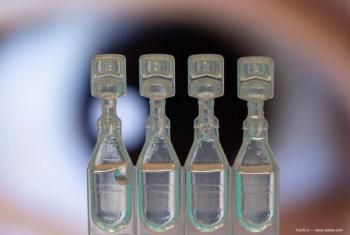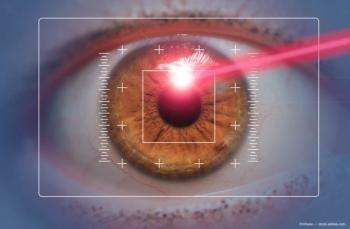
Studies suggest superiority of ketorolac in cataract surgery
A series of prospective, randomized, masked studies was conducted to compare aqueous concentrations and prostaglandin E2 (PGE2) inhibition achieved in patients undergoing cataract surgery and treated preoperatively with different topical nonsteroidal anti-inflammatory drugs (NSAIDs). The results suggest the superiority of ketorolac 0.4% (Acular LS, Allergan) for preventing inflammation and cystoid macular edema after cataract surgery.
Key Points
San Diego-A series of studies conducted to compare aqueous concentrations and prostaglandin E2 (PGE2) inhibition in patients undergoing cataract surgery and treated preoperatively with different topical nonsteroidal anti-inflammatory drugs (NSAIDs) suggests the superiority of ketorolac 0.4% (Acular LS, Allergan) for preventing inflammation and cystoid macular edema after cataract surgery, according to Frank A. Bucci Jr., MD.
"Outside of these studies, ketorolac is the only topical NSAID that has been shown to reduce macular thickening, cystoid macular edema (CME), and visual loss significantly in a large, prospective, multicenter, double-masked trial in patients undergoing routine cataract surgery. The superior aqueous concentrations and inhibition of PGE2 achieved with ketorolac compared with nepafenac and bromfenac in these prospective masked studies suggest it may provide superior control of inflammation and CME in the cataract surgery environment," said Dr. Bucci, in private practice in Wilkes-Barre, PA.
The ketorolac versus nepafenac study randomly assigned 132 patients who used their assigned study medication four times a day for 2 days preoperatively and then were treated with a pulse regimen of one drop every 10 minutes for 4 doses in the 90 minutes before surgery. An aqueous sample was obtained at the start of the case, and the analysis of NSAID concentration comparing ketorolac against amfenac, the active NSAID, showed a threefold difference favoring ketorolac, 1,151 versus 388.3 ng/ml.
"Even if the NSAID concentration in the nepafenac eyes was based on the concentrations of amfenac and the prodrug nepafenac, the total was only 831.1 ng/ml and still short of the level reached by ketorolac," he said.
Inhibition of PGE2, the target of NSAID treatment, was compared using data from 42 eyes treated with ketorolac and 40 eyes treated with nepafenac. The prostaglandin was undetectable (<100 pg/ml) in a significantly higher proportion of eyes treated with ketorolac compared with nepafenac, 61.9% versus 17.5%. A comparison of the mean levels of PGE2 in each group, assuming that the PGE2 concentration was 99 pg/ml in samples defined as below the level of detection, also showed a significant difference favoring ketorolac. In that analysis, the mean PGE2 level in the eyes treated with nepafenac was 322.3 pg/ml, which was two-fold higher than the level of 159.5 pg/ml in the eyes treated with ketorolac.
"That analysis favors nepafenac because there were 3.5 times more samples below the level of detection in the ketorolac group. In a second analysis setting the PGE2 level at 50 pg/ml in eyes with undetectable PGE2, there is a statistically significant, 2.4-fold higher level of PGE2 in eyes treated with nepafenac, compared with eyes treated with ketorolac (313.7 versus 129.2 pg/ml)," Dr. Bucci said.
Newsletter
Don’t miss out—get Ophthalmology Times updates on the latest clinical advancements and expert interviews, straight to your inbox.















































.png)


